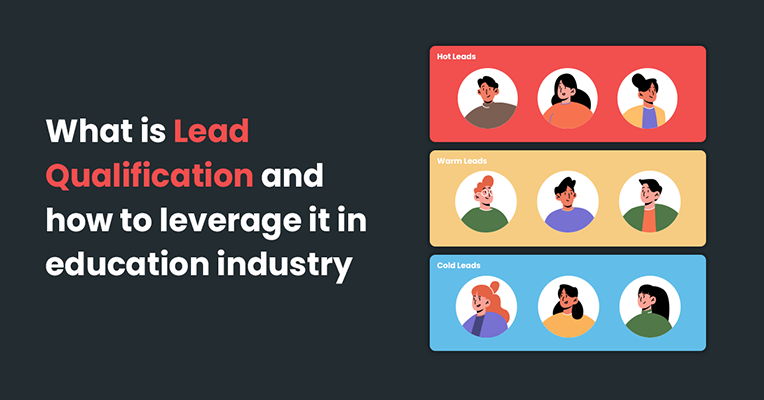Candidates these days expect a streamlined, personalised experience from their very first interaction with your educational organisations. Basic communications and generic advertising strategies are no longer sufficient to draw students.
There are numerous procedures and tactics that must be followed if you want to develop a profitable business and stay one step ahead of your competitors.
What is Lead Qualification?
Lead qualification is a critical step in the enrolment process for any educational organisation. It is the process of identifying and evaluating potential students or qualifying prospects based on a set of criteria to determine their fit and readiness for enrolment in an educational program.
By leveraging lead qualification, educational organisations can increase the possibility of successful enrolment and retention, and improve their overall ROI. In this blog post, we will discuss what lead qualification is and how to leverage it in the education industry.
How does the lead qualification process work?
In essence, lead qualifying is the process of establishing certain quality standards for your leads. A counsellor or a sales agent will only consider them suitable for further consideration once they match these criteria. Because of this, the procedure is often referred to as lead segmentation. Filtering away leads with incomplete information or duplicate material, which would take up the time of your sales team without yielding any results, is quite beneficial.
Get Your Lead Qualification Process Right
Now the question comes, “How do you go about it in the appropriate manner when trying to qualify leads?” or “What are the steps to ensure that lead qualification is done rightly?”
Let’s look at the procedures for doing it correctly. There are several ways of qualifying your leads for any educational organisation:
- Integrate lead data: Integrate all lead data from various sources such as website forms, social media, and email campaigns into your Education CRM. This will give you a complete picture of each lead’s behaviour and engagement.
- Create lead profiles: Use the data in your CRM to create detailed lead profiles that include information such as demographics, interests, and past interactions. This will help you to understand each lead’s needs and preferences.
- Define lead segments: Create lead segments based on factors such as program interest, registration form status, and lead source. This will help you to target your communication and marketing efforts more effectively.
- Use lead scoring: Use the lead data in your CRM to assign scores to each lead. This will help you to prioritise leads based on their engagement and likelihood of converting into a student.
- Use marketing automation: Using marketing automation to trigger personalized communication based on lead scores and segments. For example, you can send targeted email campaigns to leads who have shown interest in specific programs or who have a high score.
- Monitor and measure the effectiveness of your lead scoring system: Regularly monitor and measure the effectiveness of your lead scoring system. This will help you to identify which leads are most likely to convert into students, and which leads are not.
- Use data to improve your enrolment process: For example, you can use lead data to identify which marketing channels are most effective, and which lead segments are most likely to convert into learners or students.
By following these steps, you can ensure that your lead qualification process is effective and efficient, and that you are focusing your efforts on the most promising leads using an Education CRM. This will ultimately help you to increase enrolment and revenue for your institution.
Qualify leads in no time with Meritto
Lead qualification is a powerful tool for educational organizations looking to boost their enrolment numbers. Meritto’s Education CRM allows you to do it all by utilizing the right lead qualification strategies. It ensures that they are attracting the right students for your courses and programmes, resulting in a better ROI.




